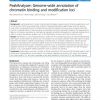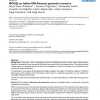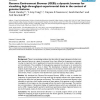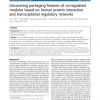218 search results - page 40 / 44 » TRANSFAC: an integrated system for gene expression regulatio... |
114
click to vote
BMCBI
2007
14 years 9 months ago
2007
Background: The Stanford Tissue Microarray Database (TMAD) is a repository of data serving a consortium of pathologists and biomedical researchers. The tissue samples in TMAD are ...
BMCBI
2010
14 years 10 months ago
2010
Background: Functional genomic studies involving high-throughput sequencing and tiling array applications, such as ChIP-seq and ChIP-chip, generate large numbers of experimentally...
BMCBI
2008
14 years 10 months ago
2008
Background: Present-day `-omics' technologies produce overwhelming amounts of data which include genome sequences, information on gene expression (transcripts and proteins) a...
BMCBI
2008
14 years 10 months ago
2008
Background: There is accumulating evidence that the milieu of repeat elements and other nongenic sequence features at a given chromosomal locus, here defined as the genome environ...
BMCBI
2010
14 years 10 months ago
2010
Background: Network co-regulated modules are believed to have the functionality of packaging multiple biological entities, and can thus be assumed to coordinate many biological fu...




